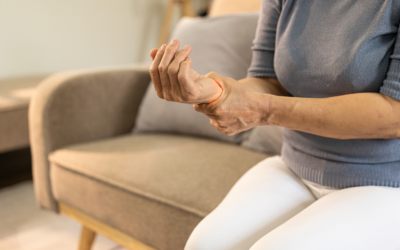
Artificial prostheses are devices designed to replace, support, or improve the functionality of missing, damaged, or paralyzed body parts. From the very beginning of its history, man has had to compensate for the abilities of limbs that no longer function. First with wood and plant fibers, then with iron, steel and copper.
Despite this evolution, the development of prosthetics has, over time, come to a standstill. For decades, little changed in prosthetic limbs from those made available to soldiers returning from World War II.
A major step change occurred following the intervention of the U.S. Department of Defense, which in 2006 launched the “Revolutionizing Prosthetics” project, an ambitious $100 million, multi-year program with the goal of developing prosthetic technologies in order to create a neural-controlled artificial limb capable of restoring the motor and sensory capabilities of patients who have suffered injuries or amputations.
What have been the advancements in prosthetic technology since then?
Brain-controlled robotic limbs
Over the centuries, various contrivances have been trying to build prosthesis capable of replicating the movements of the original limbs. One of the most famous examples is that of Götz von Berlichingen, a 16th-century German knight who lost his right arm in battle and replaced it with a prosthesis capable of holding objects from a shield to the reins of his horse and even a pen.
Today, the goal of prosthetic technology is certainly more ambitious: to create artificial limbs that can be controlled directly with the brain. Thanks to a series of electrodes implanted in the muscles, electrical signals from the brain can be collected for the control of the prosthesis’s movement. Using a computer, the signals are translated into input for the robotic limb, which is then able to act as a full-fledged extension of the body.
The return of the sense of touch
Connecting the brain with the artificial limb means creating a one-way channel: impulses reach the prosthesis but it returns nothing, no sensation.
We never stop to think how much touch affects our lives. When we grab a coffee at vending machines we are able to perfectly adjust the force we have to exert in order not to crush it. Our feet always feel the floor beneath them. For people with artificial limbs or spinal injuries, the loss of contact leads to an alienating feeling, where the world is close but at the same time distant, unreachable.
Research is working to restore these people’s ability to feel. By inserting sensors inside the prostheses that are connected to nerves, they are able to return basic tactile sensation to the brain. This modification allows for much more precise control of the prostheses, which return feedback to the user, helping him or her with everyday activities, from simply staying balanced to manipulating very small objects.
These huge advances mainly affect people who lack limbs. As for those who still have their whole body but are no longer able to control it?
Neural control of an artificial limb
The ultimate goal of prosthetic research is to find a way to connect the robot directly to the brain, bypassing the spine completely. In addition to greater accuracy in receiving impulses, this technology could help not only those who have lost a limb, but also those who have lost control of it as a result of spinal cord injuries.
Research is already underway that allows people with quadriplegia to control a robotic limb detached from their body using nothing but their own thoughts. Again, the robot is able to restore the brain’s sense of touch, which had been completely lost in some cases.
The ability to bypass spinal injuries seems particularly interesting because, in addition to controlling prosthetic limbs, it may be able to reconnect the brain with actual limbs. The prosthesis, in this case, would be the patient’s original arm or leg, still fully functional but no longer in “connection” with the brain.
From wood to metal, from plastic to real flesh, the path of prosthetic technology has made, and is making, great strides, allowing us to imagine a future in which missing limbs or the inability to control body parts will be a thing of the past.


